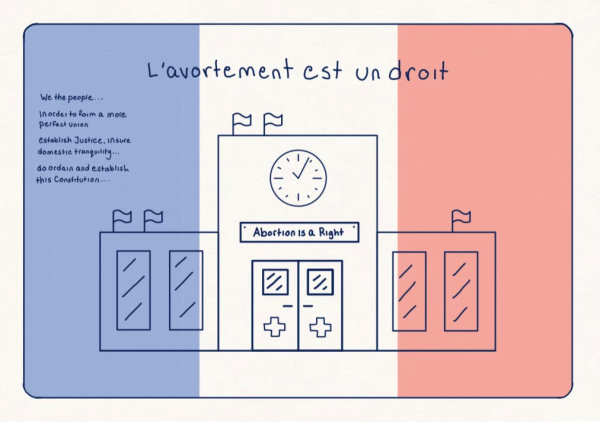Inflation Skyrockets
Inflation has plagued the U.S. economy on a scale that hasn’t been seen before in years. The skyrocketing price of consumer goods such as gas, food, and housing has caused a huge disruption to the economic state of the country, uprooted millions of people’s lives, and marked the greatest inflation rate in the U.S. in over 40 years. Across sections of the lower and middle classes, families are struggling to put food on the table, fill up gas tanks, and pay rent. While the impact of inflation is felt by many, the cause of it is often less widely understood.
One common unknown is why inflation is such a significant problem. Inflation is the rise in consumer prices which decreases purchasing power over time in an economy. It is a big issue because the value of money is crucial to a healthy, well-functioning economy. If inflation is too high, the value of money is reduced and if it is too low, money becomes nearly worthless. The goal is to keep inflation at 2%, low enough so businesses and people can thrive, but high enough so the money maintains its value within the economy.
Inflation is a natural economic phenomenon that can be categorized into two main types: cost-push inflation and demand-pull inflation. In simple terms, demand-pull inflation occurs when there is a higher demand in the economy but not enough supply, causing an increase in prices. On the other hand, cost-pull inflation occurs when there is an increase in the cost of wages or salaries and materials. The increase in means of production thereby also causes a surge in consumer prices to create a profit margin.
Southern California has been one of the hardest-hit areas in the nation, where inflation has shaken the entire economy. The shocks of the COVID-19 pandemic are still strongly felt in the economy with California reaching a peak 8.5% inflation rate, the highest it has been since 1972. The aftermath of COVID-19 is a market with a high demand for goods but not enough supply due to the limited operating power of various businesses and companies, causing prices of products as simple as toilet paper and bread to rise because of people hoarding those products and creating a sizable shortage in supermarkets.
While it is true that inflation was on the rise before, external factors such as the Russo-Ukrainian conflict coming into play have done nothing but exacerbate the problem. As of 2022, Russia is the world’s top oil-producing country. Pre-war, the U.S. got most of its oil domestically, but the rest came from Mexico, Saudi Arabia, Egypt, and 10% from Russia. President Biden signed an Executive Order on March 8th of this year that banned the import of Russian oil as part of sanctions imposed on the country. Therefore, it is no wonder that gas prices in the U.S. have jumped by 20% since the war began.
The Federal Reserve, the central bank of the United States, plays a huge role in this issue. They are in charge of monetary policy and raising interest rates, a strategy that the government has used to tone down inflation in the past. Usually, the government would not raise interest rates because it could lead to a recession, but inflation is currently so high that it is their only course of action. Raising interest rates will mean that the borrowing cost increases for houses and many other items. For example, if a family is looking to purchase a home and the interest rate or borrowing cost is high, that might cause them to shy away from the purchase decision for that house considering its high cost. More houses would be on the market, resulting in higher supply and less inflation. However, that also comes at the cost of a potential housing crisis that would occur due to the unaffordability of homes. The target interest range that the Federal Reserve is looking at in 2022 is 3.75-4%, which was the range before the 2008 recession, the biggest economic decline since WW2 in the U.S.
Inflation in itself is a problem that occurs when there is a supply shortage, high demand, production delays, or even at times a combination. Californians are experiencing all of those symptoms due to internal and external factors, including COVID-19’s impact on the supply chain and the consequences of the Russo-Ukraine war. Other factors, such as the Federal Reserve raising the interest rate, are important to address. The challenge for the Federal Reserve will be how to get inflation under control without creating a severe recession.
Hello there! Our goal is to provide relavent, engaging journalism for readers of all ages. Your donation will support the student journalists of the Wolfpacket at Claremont High School, and will allow us to purchase equipment, print our monthly issues, and enter in journalism competitions. We appreciate your consideration!

Theo da Silveira is a Senior at Claremont High School and a Sports Editor for the Wolfpacket, entering his third and final year on the staff. In addition...







